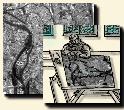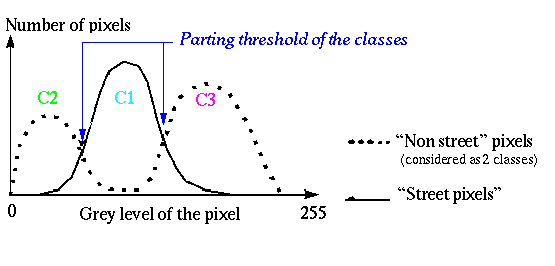 |
 |
![]()
The extraction of pixels that belong to the street class from the image is the first step of the process (Figure 67).
 |
Three classes have been identified on the image: the street class and
two other classes distributed on both sides of it. The histograms of these
three classes appear so:

In the images, rivers, lakes and railways define class C2 and buildings and vegetation define class C3.
A binary classification is performed in order to adjust interactively the thresholds according to the images, without using new samples for each new image. To obtain these parting thresholds, a barycentric classification algorithm with samples of the three classes has been performed. Some samples of the classes have been isolated manually, then the mean and the standard deviation of each class has been computed.
The value of the threshold between class C1 and class C2 is solution
of the equation:
 |
![]() :
Mean of class samples
:
Mean of class samples ![]() :
Standard deviation of class samples.
:
Standard deviation of class samples.
Threshold between class C1 and class C3 can be computed in the same
way.